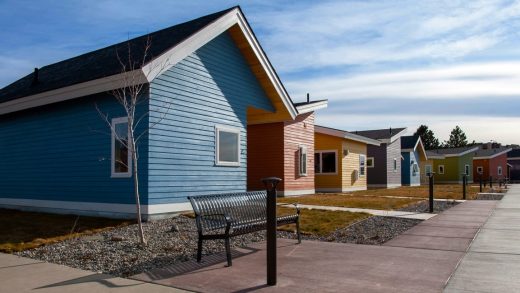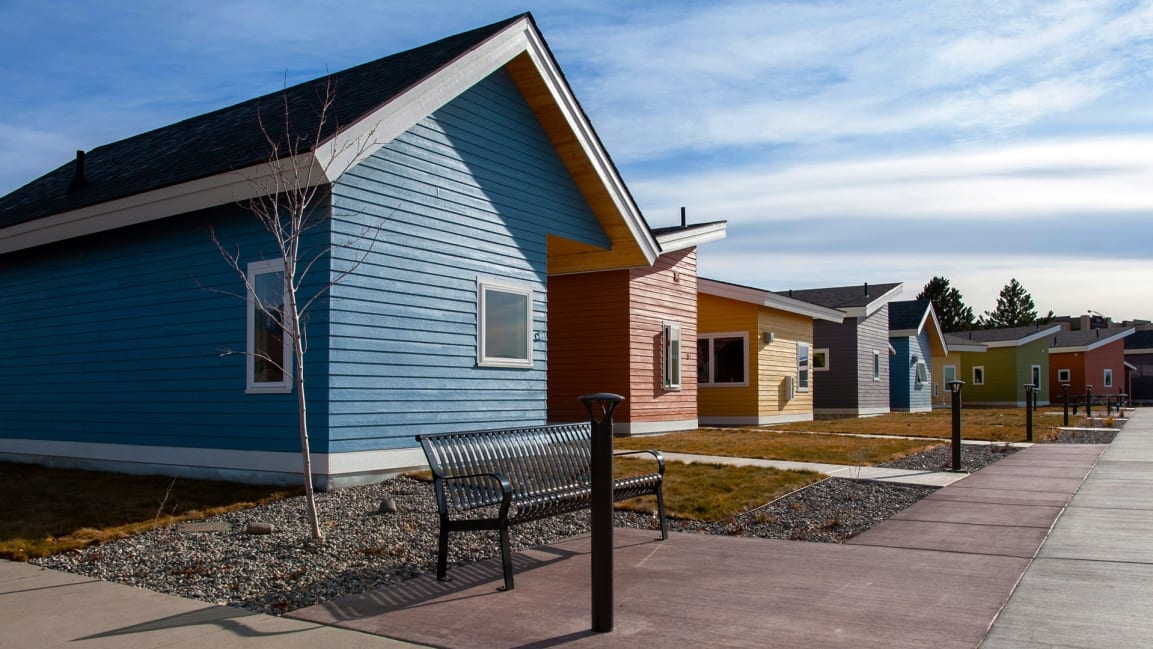In Bozeman, a new village for the homeless embraces trauma-informed design
When the pandemic turned Bozeman, Montana, into a so-called Zoom town—as newly remote workers fled from coastal cities in search of more space and cheaper houses—housing costs for locals spiked. Even before COVID-19 hit, the cost of renting or buying a home in Bozeman had been quickly rising. But the pandemic made the situation more dire, and the skyrocketing rate of homelessness in the city has only become a bigger challenge since.
Following the lead of cities elsewhere, one nonprofit turned to tiny houses as a quicker way to add sorely needed affordable housing in Bozeman. What sets this particular tiny-home village apart is an element that isn’t always part of housing schemes designed for people experiencing homelessness: The project embraces trauma-informed design.
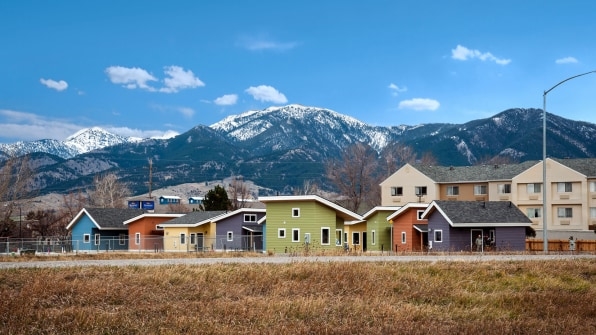
“For most of our customers here, particularly those who have very low fixed incomes or very sporadic incomes, the types of housing that are available to them are almost always much older, subsidized apartment buildings,” says Tracy Menuez, a community development director at the Montana-based nonprofit Human Resources Development Council. “They weren’t developed with the trauma of people who live in them in mind.”
Experiencing homelessness is undeniably stressful. The daily struggle to find a place to sleep, food to eat, and to avoid violence and harassment takes a clear toll—a situation that is often made worse if the person lacks a support network of friends or family to help. One Canadian study found that around two-thirds of people experiencing homelessness had suicidal thoughts. While shelters can protect people from cold weather, they can also be dangerous, overrun with roaches and rats, and so noisy at night that it’s hard to sleep.
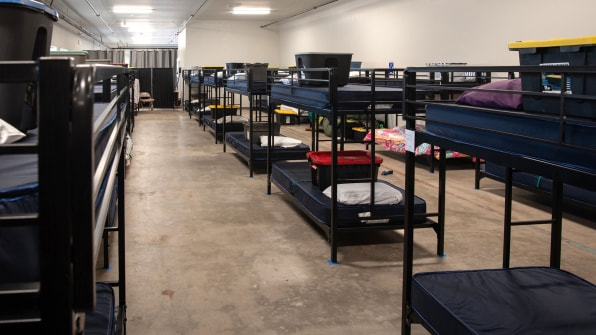
“I think ultimately most of us recognize that shelters are a really efficient way of serving a lot of people,” Menuez says. “But they’re really a difficult environment for a lot of people. I put it in the frame of like, I’m not at my best when I have a bad night of sleep. And I’m sleeping in pretty good circumstances. This is kind of like getting the worst night of sleep over and over and over again. It can be loud. It’s just a tough environment. The longer you’re in it, the more trauma you experience.”
The nonprofit worked closely with clients experiencing chronic homelessness to understand their needs. “We spent a lot of time talking to our customers, particularly those that were really struggling the most to maintain secure housing, about kind of that magic question of: What would it take for you to remain in housing?” she says. They wanted four walls and a little privacy, rather than being in an apartment building. They wanted a little green space. “We’re in Montana,” she says. “A lot of people move here because they like wide open spaces.”
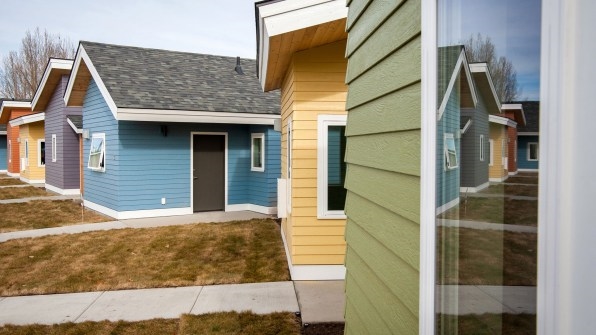
Bozeman’s new community of tiny houses, called the Housing First Village, offers residents their own small living spaces with private bathrooms and mini kitchens. The design also aims to create a peaceful, calm atmosphere. Each house, between 100 and 350 square feet, is heavily soundproofed. The ceilings are high, to give the sense of more space, and large windows let in natural light. The walls are painted a soft gray. “I found out later it was called ‘sedate gray,’” Menuez says. Although the houses are close to each other, they’re arranged so that residents have some privacy as they leave their front doors. Custom blinds on the windows let in light while offering additional privacy. Outside, there’s shared green space and garden plots. The nonprofit now plans to use some related trauma-informed design approaches in a new, larger emergency shelter that it’s also building in Bozeman.
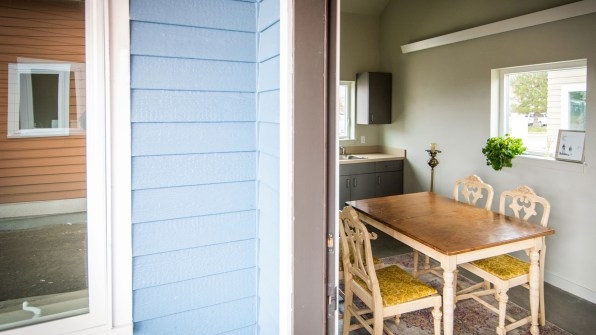
Residents, who will pay 30% of their income on rent for the tiny homes, have on-site support for mental health, coordinating basic health needs, and help with things like financial planning. Like many organizations tackling homelessness, HRDC believes in a “housing first” strategy: the theory that people need a stable place to live before they can deal with other challenges and transition into permanent housing on their own. Potential residents agreed to let a local healthcare provider and the county jail share their data so that the nonprofit could identify people who were chronically homeless and struggling the most. Local safety net systems may save $16,000 a year because these residents are now housed, the nonprofit says. “It’s kind of a cold economic model: These are the people in your community who are using the most services, and who would benefit the most from being stably housed,” says Menuez.
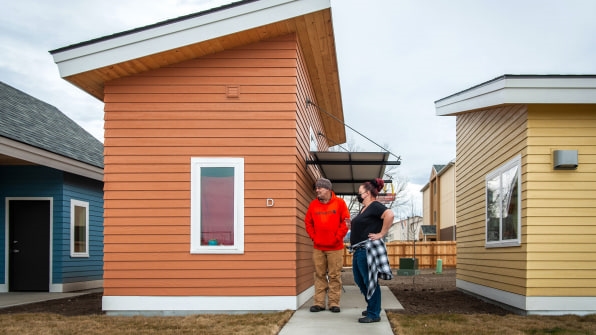
Funding from an innovation challenge through Fannie Mae helped pay for the data sharing program, along with a study on the project by the Urban Institute and a guidebook to help other communities replicate the model. HRDC is now able to offer guidance on how to find land for a project like this—the nonprofit chose to buy land in a commercial area to avoid pushback from existing residents—as well as how to arrange financing, as tiny house villages aren’t eligible for many of the typical funding sources for affordable housing.
Menuez says that Bozeman’s Housing First Village, which includes 12 tiny homes and will soon add 5 more, is just a small part of the bigger solution. “Homelessness is a problem of housing,” Menuez says. “That’s the basis of it. We need to add thousands more units in order to really ensure that we don’t have people experiencing homelessness in the community. But I think tiny homes will continue to be a part of that solution, along with every other kind of housing.”
Fast Company , Read Full Story
(29)

